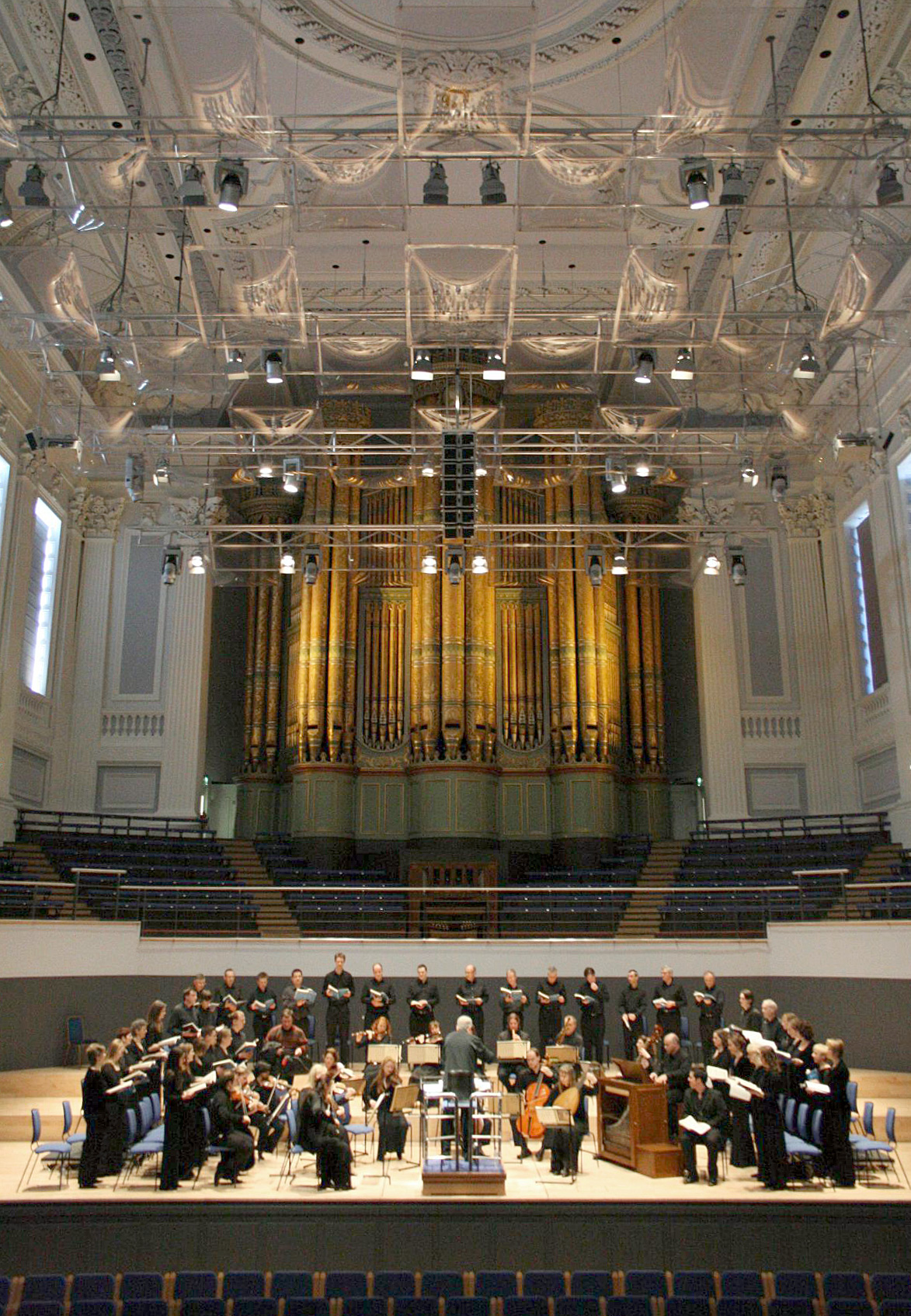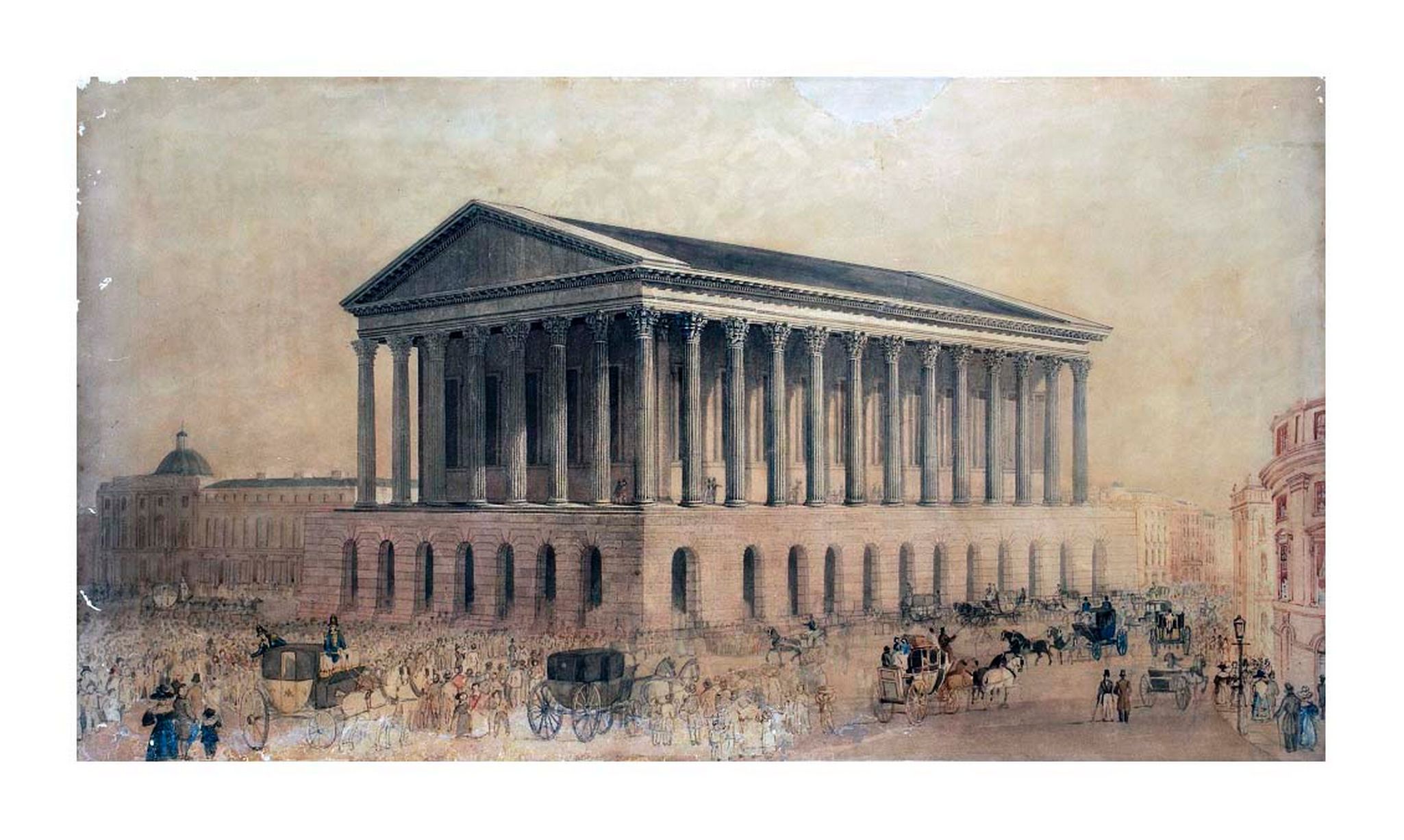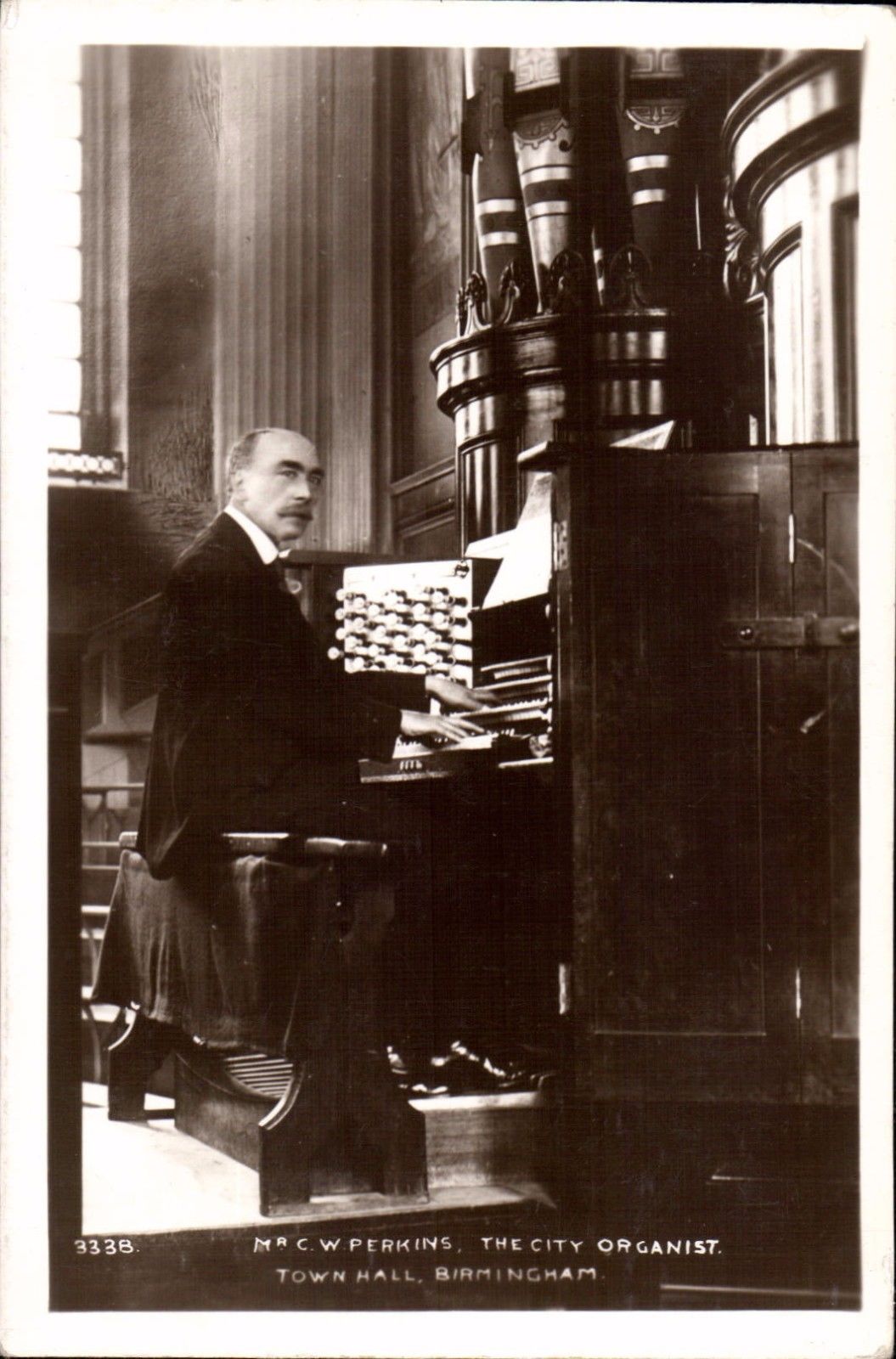|
Birmingham City Organist
Birmingham City Organist is an appointment made by the City of Birmingham. The purpose of the appointment is to have an organist for civic occasions and who will provide a series of free public organ recitals. Birmingham Town Hall is the traditional home of the City Organist, and it was under the third City Organist, James Stimpson, that the popular weekly recitals began. So popular were the recitals that audiences of around 1,500 packed in every Monday evening in the 1840s. The weekly recitals, now held on Monday at lunch time, have continued to the present day. With the re-opening of a renovated and rejuvenated Town Hall in October 2007 some concerts returned to their home in Town Hall, Birmingham with others performed at Symphony Hall, Birmingham on the Klais Orgelbau organ. List of Birmingham City Organists *Thomas Munden 1834–1837 *George Hollins 1837–1841 *James Stimpson 1842–1886 (formerly organist of Carlisle Cathedral) *Charles William Perkins 1888–1923 * Geor ... [...More Info...] [...Related Items...] OR: [Wikipedia] [Google] [Baidu] |
Symphony Hall Birmingham Interior
A symphony is an extended musical composition in Western classical music, most often for orchestra. Although the term has had many meanings from its origins in the ancient Greek era, by the late 18th century the word had taken on the meaning common today: a work usually consisting of multiple distinct sections or movements, often four, with the first movement in sonata form. Symphonies are almost always scored for an orchestra consisting of a string section (violin, viola, cello, and double bass), brass, woodwind, and percussion instruments which altogether number about 30 to 100 musicians. Symphonies are notated in a musical score, which contains all the instrument parts. Orchestral musicians play from parts which contain just the notated music for their own instrument. Some symphonies also contain vocal parts (e.g., Beethoven's Ninth Symphony). Etymology and origins The word ''symphony'' is derived from the Greek word (), meaning "agreement or concord of sound", "concert of ... [...More Info...] [...Related Items...] OR: [Wikipedia] [Google] [Baidu] |
Birmingham
Birmingham ( ) is a city and metropolitan borough in the metropolitan county of West Midlands in England. It is the second-largest city in the United Kingdom with a population of 1.145 million in the city proper, 2.92 million in the West Midlands metropolitan county, and approximately 4.3 million in the wider metropolitan area. It is the largest UK metropolitan area outside of London. Birmingham is known as the second city of the United Kingdom. Located in the West Midlands region of England, approximately from London, Birmingham is considered to be the social, cultural, financial and commercial centre of the Midlands. Distinctively, Birmingham only has small rivers flowing through it, mainly the River Tame and its tributaries River Rea and River Cole – one of the closest main rivers is the Severn, approximately west of the city centre. Historically a market town in Warwickshire in the medieval period, Birmingham grew during the 18th century during the Midla ... [...More Info...] [...Related Items...] OR: [Wikipedia] [Google] [Baidu] |
Birmingham Town Hall
Birmingham Town Hall is a concert hall and venue for popular assemblies opened in 1834 and situated in Victoria Square, Birmingham, England. It is a Grade I listed building. The hall underwent a major renovation between 2002 and 2007. It now hosts a diverse programme of events including jazz, world, folk, rock, pop and classical concerts, organ recitals, spoken word, dance, family, educational and community performances, as well as annual general meetings, product launches, conferences, dinners, fashion shows, graduation ceremonies and broadcasts. History The building was created as a home for the Birmingham Triennial Music Festival established in 1784, the purpose of which was to raise funds for the General Hospital, after St Philip's Church (later to become a cathedral) became too small to hold the festival, and for public meetings. Two sites were considered by the Birmingham Street Commissioners for the construction of a concert hall in the city; Bennetts Hill and the m ... [...More Info...] [...Related Items...] OR: [Wikipedia] [Google] [Baidu] |
Symphony Hall, Birmingham
Symphony Hall is a 2,262 seat concert venue in Birmingham, England. It was officially opened by Elizabeth II of the United Kingdom, Queen Elizabeth II on 12 June 1991, although it had been in use since 15 April 1991. It is home to the City of Birmingham Symphony Orchestra and hosts around 270 events a year. It was completed at a cost of £30 million. The hall's interior is modelled on the Musikverein in Vienna and the Concertgebouw in Amsterdam. The venue, managed alongside Town Hall, presents a programme of jazz, world, folk, rock, pop and classical concerts, organ recitals, spoken word, dance, comedy, educational and community performances, and is also used for conferences and business events as part of the ICC Birmingham, International Convention Centre. In 2016 the Concert Hall Acoustics expert Leo Beranek ranked Symphony Hall as having the finest acoustics in the United Kingdom, and the seventh best in the world. Proof of these fine acoustics is that a pre-opening acoustic t ... [...More Info...] [...Related Items...] OR: [Wikipedia] [Google] [Baidu] |
Klais Orgelbau
Orgelbau Klais is a German firm that designs, builds and restores pipe organs. It is a family run company, founded in 1882 by Johannes Klais senior and is now run by his great-grandson Philipp Klais. The firm is based in Bonn, Germany, and has completed many large-scale building and restoration projects around the globe in more than a century of organ building. History of the company Johannes Klais studied organ building in Alsace, Switzerland and Southern Germany. He founded his own organ building workshop in Bonn in 1882. His way of building organs was closely bound up with traditional construction methods using slider windchests. But as early as before the turn of the century he built high pressure stops with two mouths on pneumatic cone valve chests. In 1906, together with his son Hans, he introduced electric action. Hans Klais took over in 1925. In his time facade design began to come under the influence of the modern age, ergonomic console designs were also being developed ... [...More Info...] [...Related Items...] OR: [Wikipedia] [Google] [Baidu] |
George Hollins
George Hollins (16 March 1809 - 16 December 1841) was an organist and composer who lived in Birmingham, West Midlands. Life He was born on 16 March 1809, the son of William Hollins (1763-1843) architect and sculptor, and Catherine Holebrooke (1764-1831). Despite being lame, he studied organ under Thomas Munder, the organist of Birmingham Town Hall. In 1837 he was appointed organist of Birmingham Town Hall where he participated in two of the Birmingham Triennial Music Festival The Birmingham Triennial Musical Festival, in Birmingham, England, founded in 1784, was the longest-running classical music festival of its kind. It last took place in 1912. History The first music festival, over three days in September 1768 ...s alongside visiting composer Felix Mendelssohn. He married Mary Theresa Burchell (1820-1871), daughter of James Burchell of London, on 13 April 1837 in Tamworth. They had the following children: *Mary Hollins (b. 1837) *Julia Elizabeth Hollins (b. 1840) ... [...More Info...] [...Related Items...] OR: [Wikipedia] [Google] [Baidu] |
James Stimpson
James Stimpson (29 February 1820 – 4 October 1886) was a British cathedral organist and Birmingham City Organist. Early life He was born in Lincoln, England, on 29 February 1820, the son of William Stimpson and Rebecca Dannett. William was lay vicar of Lincoln Cathedral, who moved to Durham Cathedral in 1822, where James became a chorister in 1827. He married Isabella Mary Clarissa Martin, only child of Mrs O. Branbury, and niece of Major Martin of Guernsey on 10 December 1841 in St George's Church, Southwark. She died on 22 February 1868. He married secondly Sarah, daughter of John Herdman of Belfast at Fisherwick Place Church, Belfast on 5 January 1869. They had the following children: *Elizabeth Stimpson (b. 14 January 1870) *Sarah H. Stimpson (b. 1872) *Catherine S.F. Stimpson (b. 1874) *Revd. James Frederick Alexander Stimpson (1875-1936) *Margaret F. Stimpson (b. 1876) Career In February 1834, he was articled to Richard Ingham, organist of Carlisle Cathedral; in June 1 ... [...More Info...] [...Related Items...] OR: [Wikipedia] [Google] [Baidu] |
Carlisle Cathedral
Carlisle Cathedral is a grade-I listed Anglican cathedral in the city of Carlisle, Cumbria, England. It was founded as an Augustinian priory and became a cathedral in 1133. It is also the seat of the Bishop of Carlisle.Tim Tatton-Brown and John Crook, ''The English Cathedral'', New Holland (2002), Carlisle is the second smallest of England's ancient cathedrals. Its notable features include figurative stone carving, a set of medieval choir stalls and the largest window in the Flowing Decorated Gothic style in England.Alec Clifton-Taylor, ''The Cathedrals of England'', Thames & Hudson (1967) History Carlisle Cathedral was begun in 1122, during the reign of King Henry I, as a community of Canons Regular following the reform of the Abbey of Arrouaise in France, which followed a strict form of the canonical life, influenced by the ascetic practices of the Cistercians. Many large churches of Augustinian foundation were built in England during this period as the Archbishop of Cant ... [...More Info...] [...Related Items...] OR: [Wikipedia] [Google] [Baidu] |
Charles William Perkins
Charles William Perkins (4 October 1855 - 2 August 1927) was Birmingham City Organist from 1888 to 1923. Life He was born in 1855 the son of Robert A Perkins, jeweller, and Hannah. He studied organ under Andrew Deakin, organist of the Church of the Saviour in Edward Street, Birmingham and studied piano under Dr. Charles Swinnerton Heap. He spent his early years in London where he was also a conductor of the Epsom Choral Society. In November 1887 he wrote from his home at 5 Redburn Street, Tedworth Square, London to apply for the post of organist at Sydney Town Hall but withdrew when he was appointed Birmingham City Organist early the next year. In 1894 Théodore Salomé dedicated the first of his ''Douze pièces nouvelles pour orgue'', vol. 1, op. 59 to Perkins. In 1890 he married Mabel Norah Stone (1873 - 1943) and they had the following children: *Ruth Lynette Perkins (1892 - 1970) *Cecil Howard Perkins (1896 - 1918) *Henry Trovell Perkins (1898 - 1966) For the greater par ... [...More Info...] [...Related Items...] OR: [Wikipedia] [Google] [Baidu] |
George Thalben-Ball
Sir George Thomas Thalben-Ball (18 June 1896 – 18 January 1987) was an Australian organist and composer who spent almost all his life in England. Early life George Thomas Ball (he later took the additional name of "Thalben") was born in Sydney, Australia, where his father George Charles Ball had gone for business. His mother was Mary Hannah (née Spear). He had a younger brother. His parents were both of Cornish origin. He studied organ and piano at the Royal College of Music (RCM) in London, which he entered at the unusually young age of 14. The level of his talent can be gleaned from the fact that he played the solo part in the first performance by an English-trained pianist of Rachmaninoff's famously difficult Piano Concerto No. 3. This event occurred in 1915 at the RCM, when he was aged 19. Career After graduating from the RCM the young man was asked to deputise as organist at London's Temple Church by its then organist, Sir Henry Walford Davies. In 1923, he succeeded Wa ... [...More Info...] [...Related Items...] OR: [Wikipedia] [Google] [Baidu] |
Thomas Trotter (musician)
Thomas Andrew Trotter (born 4 April 1957) is an English concert organist. He is Birmingham City Organist, organist of St Margaret's, Westminster, visiting Fellow in Organ Studies in the Royal Northern College of Music and president of St Albans International Organ Festival. Biography Born in Birkenhead, he was a pupil at Malvern College and studied music at Cambridge University where he was organ scholar at King's College. He also studied under Marie-Claire Alain, winning the ''Prix de Virtuosité'' in her class. He won first prize in the interpretation competition at the St Albans International Organ Festival in 1979 and made his debut in the Royal Festival Hall the following year. He was appointed to the position of Birmingham City Organist in 1983, succeeding Sir George Thalben-Ball. Trotter also studied the violin. In Birmingham he plays regularly in the city's Symphony Hall and Town Hall, usually including contemporary compositions in his recitals. He is also noted ... [...More Info...] [...Related Items...] OR: [Wikipedia] [Google] [Baidu] |



.jpg)


